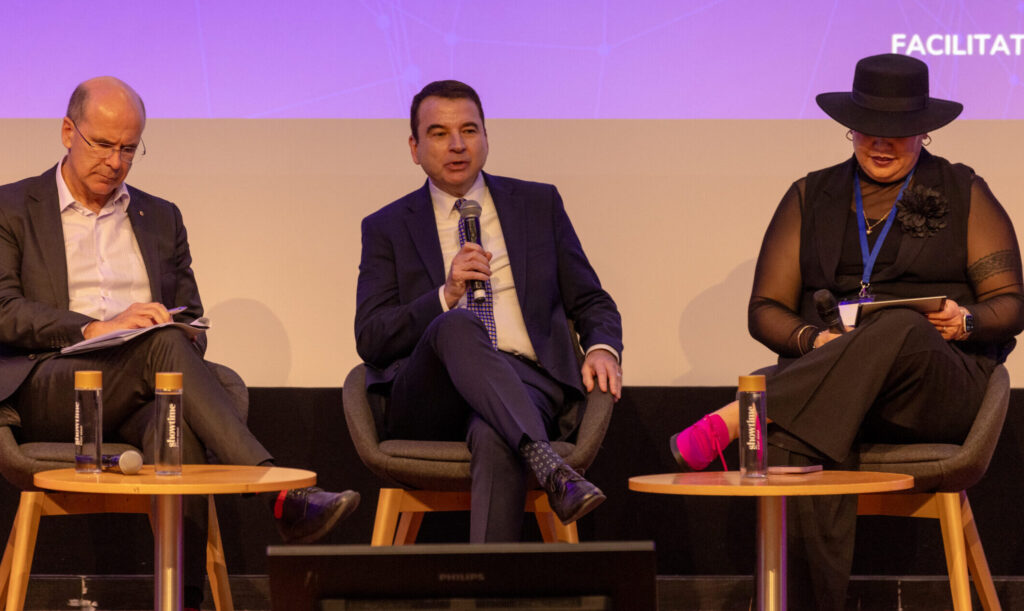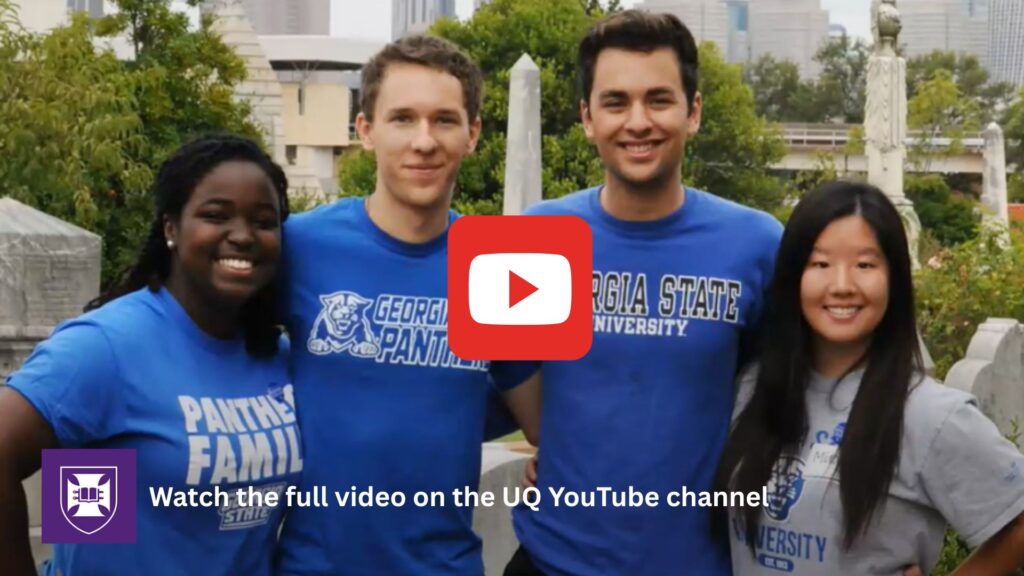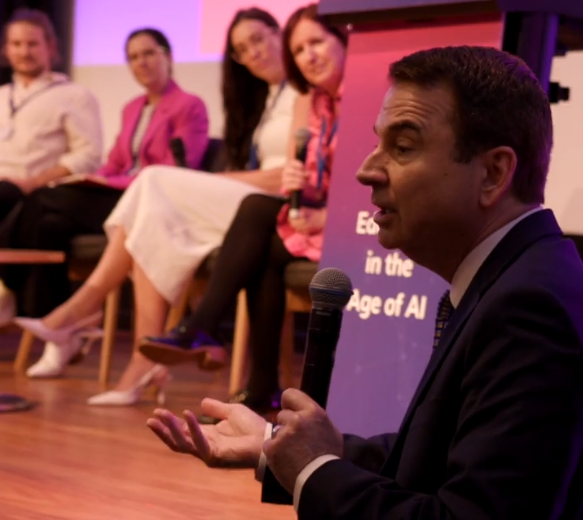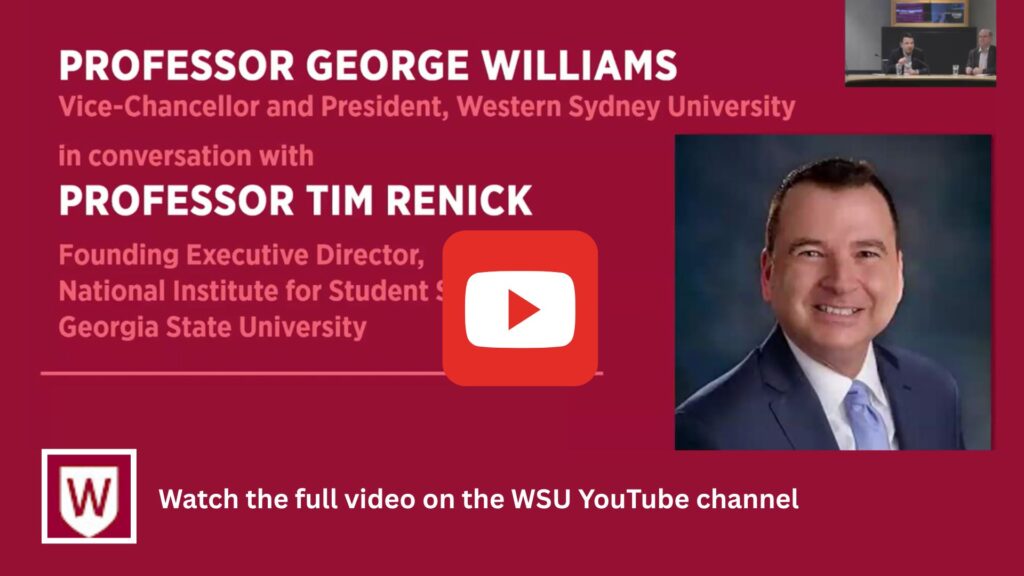Insights from Dr Tim Renick’s speaking tour of Australia
Recently, OES had the opportunity to support Dr Tim Renick, Executive Director of the National Institute of Student Success’ visit to Australia to share insights on advancing student success in higher education.
His visit brought together sector leaders to explore practical strategies for embedding equity at the heart of institutional transformation – something that closely aligns with OES’ approach to online education.
Below are key takeaways from his engagements across Queensland, New South Wales and Victoria.

Dr Tim Renick is a leading voice in student success, with a mission to use data to close equity gaps in access to higher education.
His work at Georgia State University (GSU) has delivered remarkable results, boosting graduation rates by 70% since 2010 and eliminating longstanding disparities in student outcomes, particularly for low-income and first-generation students from Black and Hispanic families.
As Executive Director of the National Institute for Student Success (NISS), he advises on U.S. education policy and inspires global education leaders to advance equity in access and outcomes.

Enabling international collaboration to achieve shared goals
During April OES supported a visit from Dr Renick to Australia in partnership with the University of Queensland (UQ) and Western Sydney University (WSU) for the HEDx Higher Education in the Age of AI conference.
During his visit, Dr Renick engaged with the Australian higher education sector through a series of events, including a presentation at HEDx, a public lecture at UQ, a live-streamed fireside discussion at WSU, and a presentation to the OES executive team sharing data-driven strategies to improve student success.
A clear theme throughout was the need to embed equity at the heart of institutional systems to dismantle barriers and better serve all students, particularly those who are the most marginalised.
Watch: ‘Student success through proactive data-driven engagement’ by Dr Tim Renick at UQ

Access via the UQ YouTube Channel.
Student-first, not AI-first
Across multiple engagements, Dr Renick consistently reinforced one message: technology should be used only when it clearly benefits students. AI and other tools must support, not replace, the work and insights of real people.
As AI continues to evolve in capability and uptake, institutions must remain student-first, and not ‘AI-first’.
The priority should be using technology to streamline processes and free up staff for the work that matters most: helping students succeed.
At GSU, AI-powered chatbots have transformed support services, cutting response times from 10 days to under 10 seconds.
But for Dr Renick, this work was never about adopting new technology for its own sake. It was about solving practical problems that disproportionately impact low-income and first-generation students, such as bureaucratic confusion and lack of access to effective student support services.
Speaking at the HEDx Conference, he noted that AI is simply a tool. Its success, and the opportunity to create positive impact through the use of AI lies in how well it supports a university’s mission and enhances the student experience.

Mission-driven innovation: Progress over perfection
A strong theme throughout the visit was the need for universities to act decisively, rather than waiting for perfect conditions, which is a motto that Dr Renick and his team have lived by at GSU.
“If we had waited for the stars to align,” Renick said, “30,000 students wouldn’t have degrees today.”
Tim’s message on this was clear. He urged leaders of universities to stop deferring action and start embracing mission-driven transformation.
Even with limited resources, when there is a clear commitment to student outcomes positive change is possible. But this shift requires universities to prioritise their core mission and listen intently to student needs, acting on them swiftly and purposefully.
Watch: ‘Student Success through Proactive Data-Driven Engagement’ at WSU.

Access the video via the WSU YouTube Channel.
Equity and access: Designing for the margins
At GSU, Dr Renick’s work has focused on improving outcomes for underrepresented students. From reducing attrition to creating structured academic pathways, his approach removes friction for those who face the greatest barriers to success.
A standout anecdote was the issue of ‘summer melt’, a phenomenon at American universities where administrators see a rapid decline in student retention outcomes over the summer period, where students who are admitted and confirmed don’t turn up to study.
To address this issue, GSU used an AI chatbot named Pounce to proactively guide students through critical administrative tasks, like submitting forms. These tasks are often especially challenging for low-income and first-generation students.
The result? A drop in the ‘summer melt rate’ from 19% to 9%, enabling more students to both start and continue their academic journeys.
Throughout his visit, Dr Renick stressed the need to design interventions around students’ lived experiences. This includes using predictive analytics to identify those at risk, simplifying bureaucratic processes, and aligning programs with real-world career outcomes to build student confidence.
Lessons for the Australian context
Through his conversations with OES, UQ and WSU, Dr Renick explored how these approaches might be adapted to the Australian higher education landscape.
In these conversations, the idea of institutional clarity came to the forefront including a focus on knowing your student population, being honest about what’s working (and what’s not), and building support systems that reflect student realities.
Australian universities present across Dr Renick’s appearances echoed the urgency of taking deliberate, student-centred action, especially in an evolving education landscape shaped by shifting student expectations, rapid technological change, and a volatile labour market.
Ultimately, the human element matters most
The overarching message from Dr Renick’s tour was one of hope and responsibility.
While data, AI, and technology can be powerful, they are most impactful when used to support human connection, enhance access, and reduce complexity.
The challenge for all universities is clear: lead with purpose.
Put students at the centre. Choose progress over perfection. Use every tool available to create a more inclusive and successful future for higher education.



